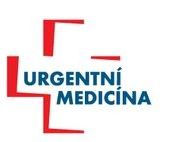INTRODUCTION
- Editorial – Jana Šeblová
- Contents
CLINICAL TOPICS AND RESEARCH
- The position of aVR ECG lead in medical emergencies – Roman Škulec, David Astapenko, Vlasta Dostálová, Jan Beneš, Pavel Roleček, Vladimír Černý
- Comparison of the effectiveness of dispatcher-assisted cardiopulmonary resuscitation depending on the instructions used: a prospective randomized simulation study – Michal Plodr, Jan Lekeš, Vít Musil, Václav Bláha, Anatolij Truhlář
- Agitation and delirium in the elderly, diagnostic algorithm – Milena Bretšnajdrová
- A story of one depression – Jana Šeblová, Jan Tvrdík, Jan Včelák
INFORMATION
- Report of the board of the Society for Emergency and Disaster Medicine CzMA JEP in the years 2015–2018 – Jana Šeblová, Roman Gřegoř, Anatolij Truhlář, Milan Ticháček, Petr Hubáček
- Non-physician section´s 2018 annual report – Jiří Kodet, David Peřan
- Europe and emergency medicine 2018–2019 – Jana Šeblová
ABSTRACTS
The position of aVR ECG lead in medical emergencies
ROMAN ŠKULEC, DAVID ASTAPENKO, VLASTA DOSTÁLOVÁ, JAN BENEŠ, PAVEL ROLEČEK, VLADIMÍR ČERNÝ
Abstract
Evaluation of twelve-lead electrocardiogram is a routine part of initial emergency assessment of patients presenting with severe cardiovascular symptoms. However, aVR lead is traditionally neglected in this process. The authors provide an overview of clinical situations where aVR lead assessment is beneficial and can have a significant impact on further management. These include clinical setting of acute coronary syndrome, acute pericarditis, regular wide complex tachycardia and narrow complex tachycardia, pulmonary embolism and tricyclic antidepressant overdose.
Key words: twelve-lead ECG – aVR
Comparison of the effectiveness of dispatcher-assisted cardiopulmonary resuscitation depending on the instructions used: a prospective randomized simulation study
MICHAL PLODR, JAN LEKEŠ, VÍT MUSIL, VÁCLAV BLÁHA, ANATOLIJ TRUHLÁŘ
Abstract
The authors present results of prospective randomized simulated study focused on instructions and phrase formulation during dispatcher-assisted cardiopulmonary resuscitation (D-A CPR). The main aim of this study was to recognize differences in the effectiveness of resuscitation between two forms of instructions with emphasis on recommended compression depth and frequency. The more detailed, standardized instruction (SOFT group) and simplified instruction (HARD group) were used. There were randomized 49 subjects in the SOFT group and 50 subjects in the HARD group. The analysis of observed results did not reveal differences. The average compression depth was insufficient for both groups (23,7 mm SOFT, resp. 25,6 mm HARD; OR1,9 (−0,6; 4,4), p = 0,11. Statistically significant differences between standard and simplified form of instructions during D-A CPR were not proven.
Key words: dispatcher-assisted cardiopulmonary resuscitation – resuscitation – simulation
Agitation and delirium in the elderly, diagnostic algorithm
MILENA BRETŠNAJDROVÁ
Abstract
Agitation and delirium is a frequent symptom in the elderly, being a sign of danger and increased risk to the patient. Changes in the field of cognition have multifactorial causes. Timely diagnosis, differential diagnosis, and adequate symptomatic and causal therapy are of the highest importance. Unlike adult patients, seniors require a different dosage of medication and the substances have different pharmacokinetics. The presented paper provides an overview of appropriate medication and of recommended combinations of medical drugs used for management of the clinical situation – restlessness, delirium.
Key words: agitation – delirium – elderly – symptomatic and causal therapy
A story of one depression
JANA ŠEBLOVÁ, JAN TVRDÍK, JAN VČELÁK
Abstract
The authors present a case report of a pacient with intravenous drug abuse in the case history. A young man was transported to an emergency department from a psychiatric hospital with a request to provide an intravenous access for fluid replacement due to patient´s febrile condition. The real cause of patient´s critical condition was a large intracranial abscess. However infections in patients with intravenous drug abuse are quite common – namely B and C hepatitis, superficial thromboflebitis and soft tissue inflammations, invasive infections, sepsis, bacterial endocarditis and others, the brain abscess is a rare diagnosis even in this specific subpopulation group. The symptoms are often misdiagnosed as a psychiatric illness based on case history of drug abuse.
Key words: infection complications in drug abusers – brain abscess
